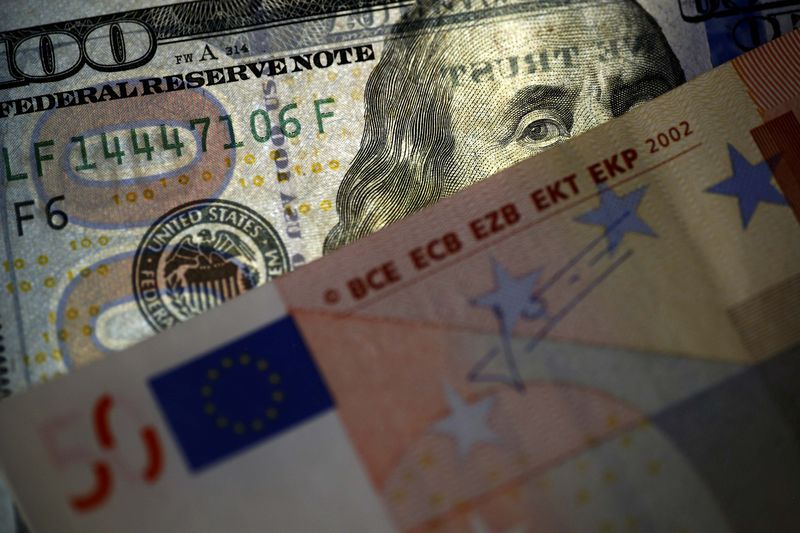Investing.com – The U.S. dollar edged lower in early European trade Tuesday, while the euro gained before the release of key inflation readings later this week which will offer more cues on global interest rates.
At 04:00 ET (09:00 GMT), the Dollar Index, which tracks the greenback against a basket of six other currencies, traded 0.2% lower at 103.570, following a 0.2% slide on Monday.
Dollar calm ahead of Fed’s favorite inflation gauge
The dollar has retreated over the last week, but still trades not far away from recent three-month highs as traders position for the maintaining interest rates at elevated levels for longer than had been expected at the start of the year.
Kansas City Federal Reserve Bank President Jeffrey Schmid became, on Monday, the latest official to warn that the central bank was in no hurry to begin trimming interest rates early.
“With inflation running above target, labor markets tight and demand showing considerable momentum, my own view is that there is no need to preemptively adjust the stance of policy,” Schmid said in his first extensive public remarks since he began the job last August.
The is due for release on Thursday, and forex trading ranges are likely to be tight ahead of the data, which is widely seen as the Fed’s preferred inflation gauge.
Economists are expecting a 0.4% increase for January after 0.2% in the previous month. A stickier-than-expected reading could prompt the Fed to delay rate cuts further.
The Federal Reserve is likely to delay cutting interest rates until the middle of the year, according to Citi analysts, as U.S. inflation shows signs of remaining stubbornly elevated.
Euro gains ahead of CPI release
In Europe, traded 0.2% higher at 1.0863, with European traders also on inflation watch as the eurozone releases its latest data on Friday, the last such reading before the upcoming European Central Bank meeting on March 7.
Economists are expecting an annual reading of 2.5% for February, dropping from 2.8% in January.
While this figure would still be above the ECB’s 2% medium-term target, the central bank is also having to contend with lack-luster growth in the eurozone, and in Germany in particular, the region’s dominant economy.
is expected to remain at a low level in March, according to forward-looking data published by GfK earlier Tuesday.
traded 0.1% higher at 1.2698, after data showed that British grocery prices rose this month at their lowest rate since March 2022.
Market researcher Kantar said U.K. annual grocery price inflation was 5.3% in the four weeks to Feb. 18, down from 6.8% in the previous four-week period.
However, U.K. inflation continues to run at levels above the Bank of England’s 2% medium-term target, suggesting the BOE is still likely to lag the Federal Reserve and the European Central Bank when it comes to rate cuts.
Yen benefits from inflation data
In Asia, traded 0.4% lower to 150.17, with the yen one of the day’s better performers after read slightly higher than expected for January.
While the reading still showed a retreat in inflation, it factored into growing expectations that the Bank of Japan will raise interest rates as soon as April.
traded largely unchanged at 7.1980, in range bound trading before a string of key purchasing managers index readings due this Friday, which are expected to shed more light on Asia’s biggest economy.
Read the full article here












